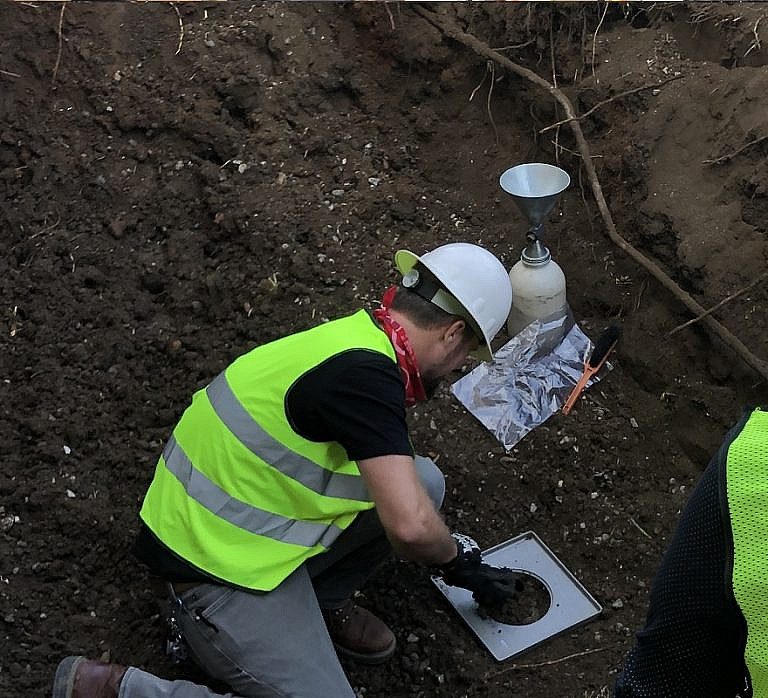Triggered Creep
In the field of geology, the term “Triggered Creep” refers to a type of creeping landslide, usually along a fault line, that is triggered by a source of seismic activity.
In the field of geology, the term “Triggered Creep” refers to a type of creeping landslide, usually along a fault line, that is triggered by a source of seismic activity.

Effective Stress (σ’) “Effective Stress” (σ’) is a geotechnical engineering term. Effective Stress is a function of “total stress,” and is due to the solid particles of soil. Effective stress represents an excess of stress above pore-water pressure (or neutral stress). Effective Stress Formula Effective Stress = Total Stress – Pore-Water Pressure.

Intrusive Rocks In the volcanology branch of geology, intrusive rocks are igneous rocks that form and crystallize under the Earth’s ground surfaces, within other geologic formations. In fact, intrusive rocks form by the process of magma shooting through pre-existing sedimentary, igneous or metamorphic rocks. For instance, a pegmatite dyke or a batholith. On the other…

Impervious Membrane in Methane Mitigation Impervious Membrane: In accordance with the Los Angeles Department of Building and Safety (LADBS) Methane Code, Ordinance Number 175790, an impervious membrane is a continuous methane gas barrier. It is a crucial part of the methane mitigation process and underlies a building to impede the vapor intrusion of methane soil gas….

Milliequivalent per liter Milliequivalent per liter (meq/L): A unit used to express the chemical equivalence of the concentration of solutes in a solution. It is calculated by dividing the concentration of a substance (in mg/L) by its equivalent weight. This measurement helps in understanding the reactive capacity of ions in the solution.

Soil Compaction Testing or Soil Density Testing Soil compaction testing, or soil density testing, is the process by which the density property of a soil mass is increased in the field by various means, and monitored by a professional geologist in accordance with local building department specifications. During the placement of engineered backfill material, density…

Liquefaction Liquefaction: Liquefaction is the process by which there is: (1) a sudden and significant decrease of shear resistance in a soil sample (cohesion-less); (2) a sudden (but temporary) increase of the pore-water pressure of a substance; and (3) a solid mass of soil that is transformed into a fluid state mass. In the event…